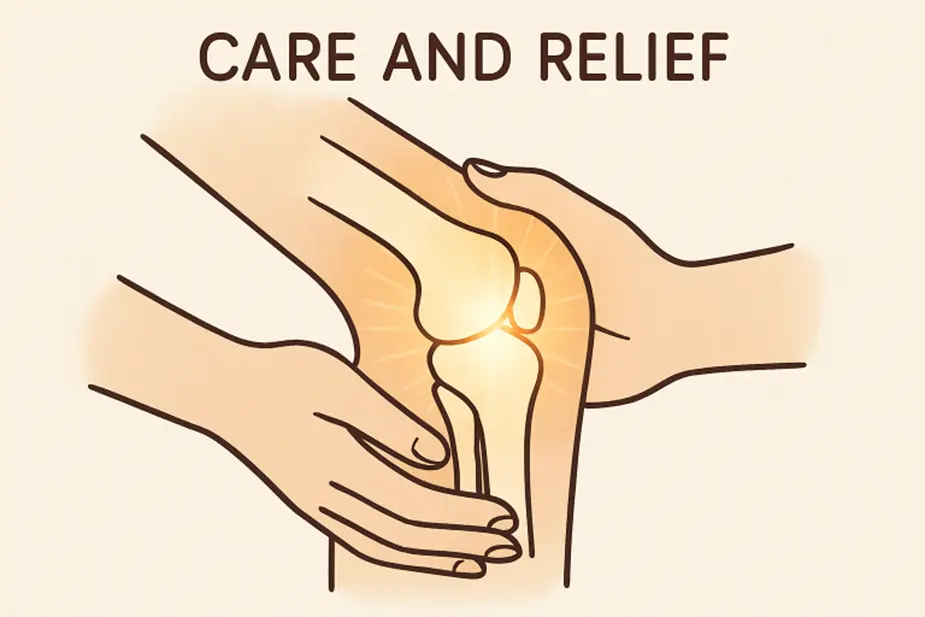Understanding the Root Causes of Joint Pain
Joint pain can dramatically affect daily living, whether from age-related changes, autoimmune conditions, injuries, or infection. Recognizing the underlying causes is crucial for lasting relief. According to the Centers for Disease Control and Prevention (CDC), arthritis alone is a leading cause of disability in adults, showing just how widespread joint issues are worldwide. Early identification promotes better management and helps guide the selection of appropriate treatment paths.
Exploring available joint pain treatment options means considering various strategies, from lifestyle changes to targeted medical therapies. Understanding these approaches empowers individuals to make informed choices and work proactively with healthcare providers for effective outcomes.
Joint issues can range significantly in experience and severity, making it essential to personalize care. What begins as transient discomfort may become chronic if not addressed early, and some individuals are genetically predisposed to joint diseases, adding complexity to their management. A precise diagnosis paves the way for thoughtful, effective interventions that prevent further deterioration and support joint longevity.
Joint pain is often exacerbated by daily habits, environmental factors, or even medication side effects. Examining routine behaviors and their impact can identify triggers and make impactful modifications. For many, combining lifestyle adjustments with medical direction can lead to measurable relief and improved function.
Smart Lifestyle Adjustments for Joint Longevity
Protecting your joints begins with examining everyday activities. Maintaining a healthy weight, practicing posture awareness, and choosing ergonomic furniture can significantly reduce undue pressure on weight-bearing joints. Simple adjustments, such as regular standing breaks during long periods of sitting and prioritizing joint-friendly footwear, can stave off stiffness and deterioration over time.
Sleep is another crucial factor often overlooked. Quality rest supports natural recovery and reduces inflammation, which can intensify joint pain. Establishing a consistent routine and prioritizing restorative sleep can reduce morning stiffness and improve daily mobility.
Exercise and Movement: Finding the Right Balance
Low-impact exercise is a cornerstone of joint health. Activities like swimming, brisk walking, cycling, and water aerobics strengthen supporting muscles and improve blood flow to joints without subjecting them to excessive strain. Research from Harvard Health Publishing suggests that physically active people maintain a better range of motion and experience less disability from chronic joint pain conditions.
Collaborating with a physical therapist ensures exercise routines are safe, tailored, and adaptive as needs change. Therapists can recommend modifications and tools to maximize benefit, even for those with severe pain or limited mobility. The proper guidance helps balance rest and activity that supports healing, rather than causing setbacks.
Nutrition and Supplements for Joint Health
A diet rich in anti-inflammatory foods—like wild-caught fish, leafy greens, berries, and seeds—can help minimize discomfort and swelling. Healthy fats, especially omega-3 fatty acids, support joint lubrication and cardiovascular health. Turmeric, ginger, and certain herbal teas have shown promise in reducing inflammation for some individuals.
When recommended by a healthcare professional, nutritional supplements can further support joint structures. Though results vary, many find relief with glucosamine, chondroitin, or collagen peptides. Consulting with a provider before starting any supplement regimen is critical to avoid potential interactions with prescribed medications and to ensure quality and safety.
Exploring Modern Therapies: From Minimally Invasive to Cutting Edge
Medical advancements are rapidly expanding the arsenal of tools available for chronic joint pain. Physical therapy remains a frontline option, but for those needing further support, injection therapies (like corticosteroids or hyaluronic acid), platelet-rich plasma (PRP), and regenerative medicine are increasingly utilized. Some procedures encourage natural tissue repair with minimal downtime, reducing reliance on surgery and long-term medication use.
Emerging evidence supports new treatments involving biological therapies, like stem cell infusions, which aim to stimulate the body’s healing processes. Treatment should be tailored to individual needs, preferences, and medical history. It is helpful to discuss options with a medical provider to weigh benefits, risks, and suitability for your unique situation. Information from OrthoInfo by the American Academy of Orthopaedic Surgeons offers insight into these evolving treatment modalities.
Holistic Approaches: Mind and Body Techniques
Integrative therapies like yoga, tai chi, acupuncture, and meditation offer significant benefits for many living with joint pain. These methods address the physical symptoms and promote emotional well-being, helping to lower pain perception and improve quality of life. Massage therapy is another adjunct that can reduce muscle tension and support circulation, further relieving joint discomfort.
Consistency is key with holistic approaches—regular practice yields the best results. Seeking out licensed practitioners ensures techniques are performed safely and effectively. Integrative care that combines standard medical strategies with mind-body techniques can often achieve greater gains than either alone.
When To Seek Professional Help
Persistent, worsening, or disabling joint pain is a signal to consult a healthcare provider. Warning signs such as redness, swelling, significant loss of function, or fever warrant prompt evaluation to rule out serious causes such as infection or inflammatory disease. Early intervention can prevent irreversible joint damage and lead to more favorable long-term outcomes.
A thorough assessment by a physician may include blood tests, imaging, or referral to specialists. Clear, open conversations about symptoms and treatment goals support the development of a personalized, effective plan.
Frequently Asked Questions About Joint Pain Treatment
- Can lifestyle changes alone cure joint pain? While significant improvements are often achievable through lifestyle changes, some individuals with advanced disease or severe pain may need additional therapies for comprehensive relief.
- Is it safe to exercise with joint pain? Gentle, low-impact activities are generally safe and valuable for most people. Always seek professional guidance if starting a new routine or if exercise significantly worsens pain.
- Which foods are best for joint health? Focus on antioxidant-rich fruits and vegetables, healthy fats, and lean proteins. Limiting processed foods and added sugars also helps reduce systemic inflammation.
- When should someone try advanced therapies? If conservative management doesn’t produce desired results, discuss modern or advanced therapies with a specialist to explore appropriate next steps.
Conclusion
Successfully managing joint pain calls for a holistic and adaptive approach. By integrating lifestyle changes, evidence-based medical solutions, and holistic therapies, individuals can regain mobility, independence, and improved quality of life. Advances in joint pain treatment continue to offer hope, supported by ongoing medical research and innovative practices. With the guidance of skilled healthcare professionals and a commitment to personalized care, long-lasting relief from joint pain is increasingly within reach for everyone.
Also Read-How Modern Lifestyles Influence Spine Health








